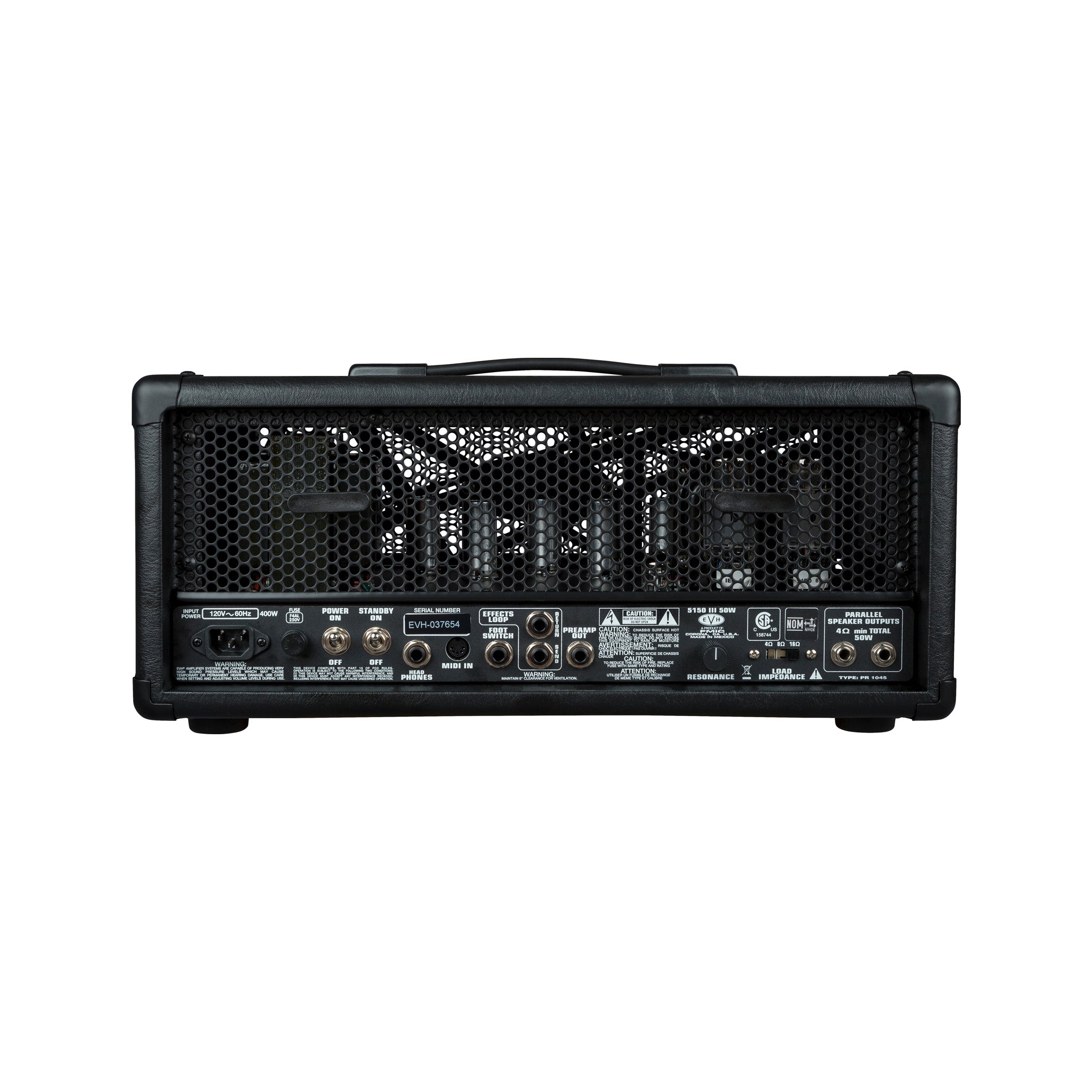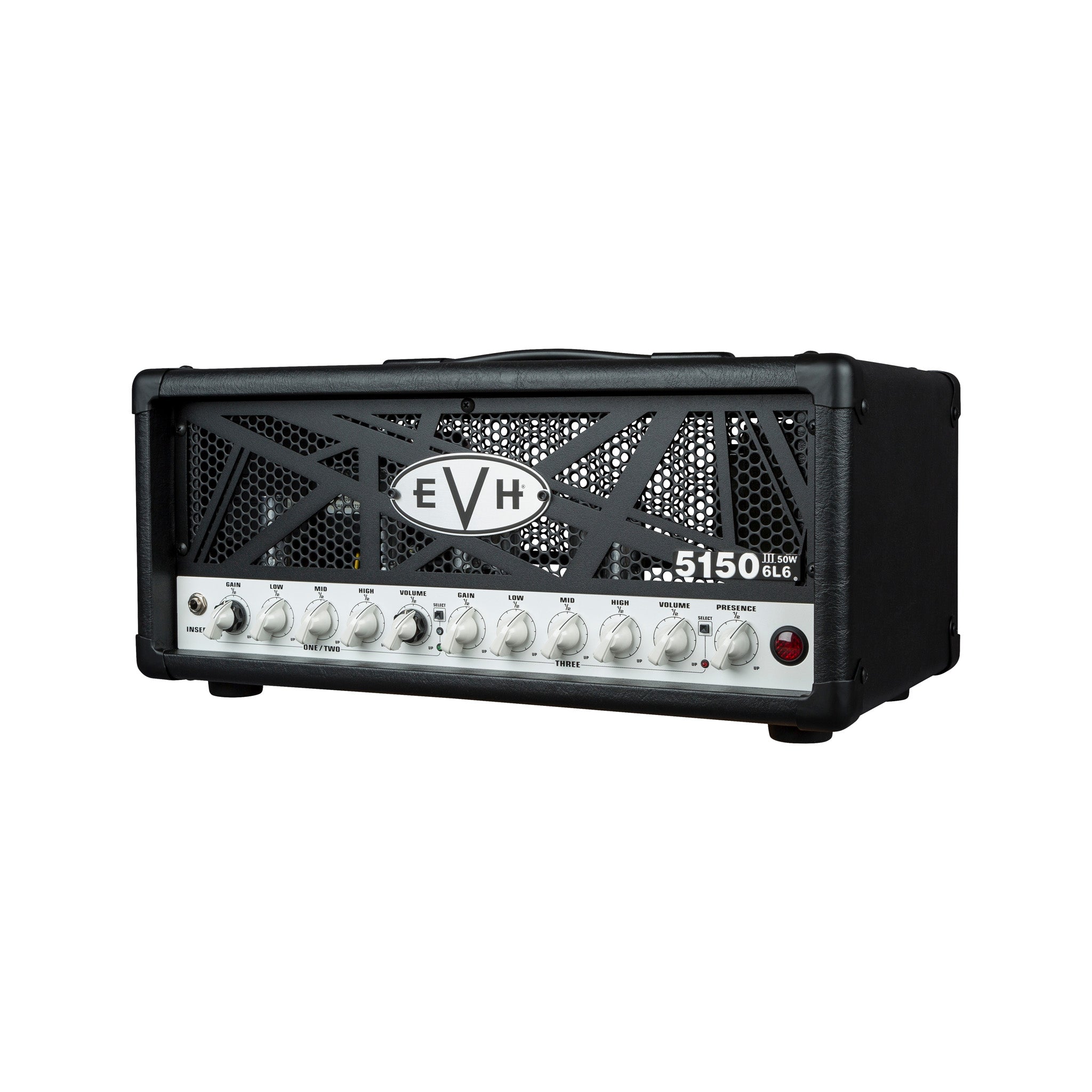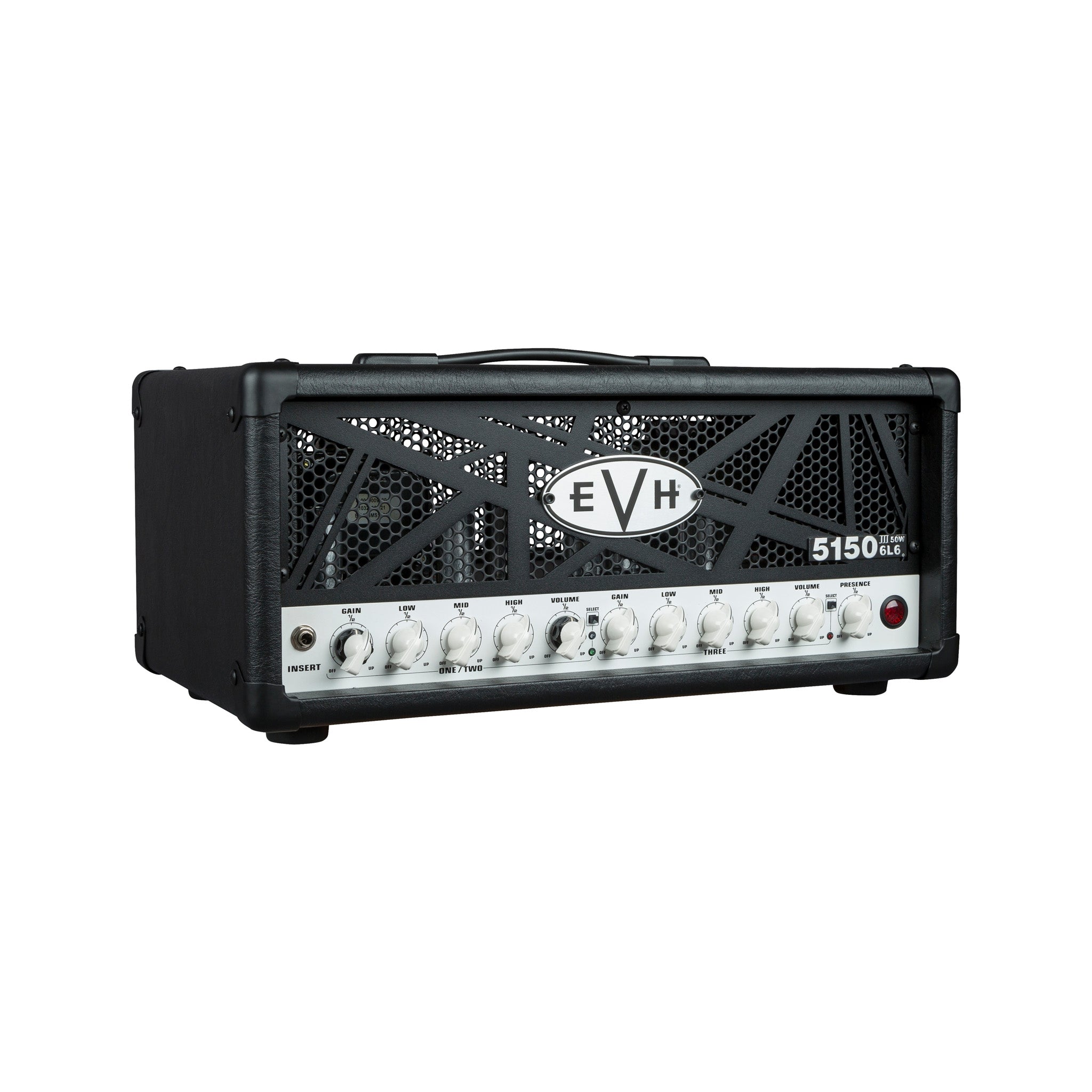The EVH® 5150III® 50W 6L6 Head is a must - have for guitar players. Its smaller size makes it highly portable, yet it delivers arena - like volume and performance. With three channels, it suits any playing style, whether you're after crisp cleans, raw crunch, or searing leads. The newly added independent dual - concentric controls let you easily match gain and volume levels. The 2.0 version of this 50 - watt head offers a wide range of tones. Channel one gives crystal - clear clean tones, channel two goes from chunky overdrive to tight distortion, and channel three has rich liquid gain. Channels one and two share EQ but have their own gain/volume controls, while channel three has independent gain, volume, and EQ controls. All channels come with global presence and resonance controls. This amp head features selectable impedance (4, 8, or 16 ohms), dual parallel speaker output jacks, an effects loop, a headphone jack, a line out, and a four - button footswitch with 1/4” input and MIDI input. Wrapped in Black or Ivory textured vinyl and with a recognizable black EVH - striped steel grille, it's a stylish and powerful choice. A high - quality fitted cover is available as an accessory. Specifications include 50W power at 120V, various channel controls, specific tube configurations, and a weight of 33 lbs (15 kg).




Using your EVH 5150 III 50W Guitar Tube Amplifier Head is a breeze. First, connect your guitar to the input jack. Then, you can choose the right channel for your playing style - clean for soft melodies, crunch for a bit of edge, and lead for high - energy solos. Adjust the gain, volume, and EQ controls according to your preference. You can use the dual parallel speaker output jacks to connect speakers, or use the headphone jack for private practice. When using the footswitch, plug it into the 1/4” input jack and you can switch channels easily. As for the MIDI input, it allows for more advanced control. Here are some important things to note. Always make sure to turn off the amplifier before making any connections or disconnections to avoid damage. Don't expose the amp to extreme temperatures or humidity. To maintain your amplifier, keep it clean. You can use a soft, dry cloth to wipe the exterior. Check the tubes regularly. If you notice any unusual sounds or performance issues, it might be time to replace the tubes. Remember to store the amplifier in a safe place, and if you have the accessory cover, use it to protect the amp from dust and scratches.









